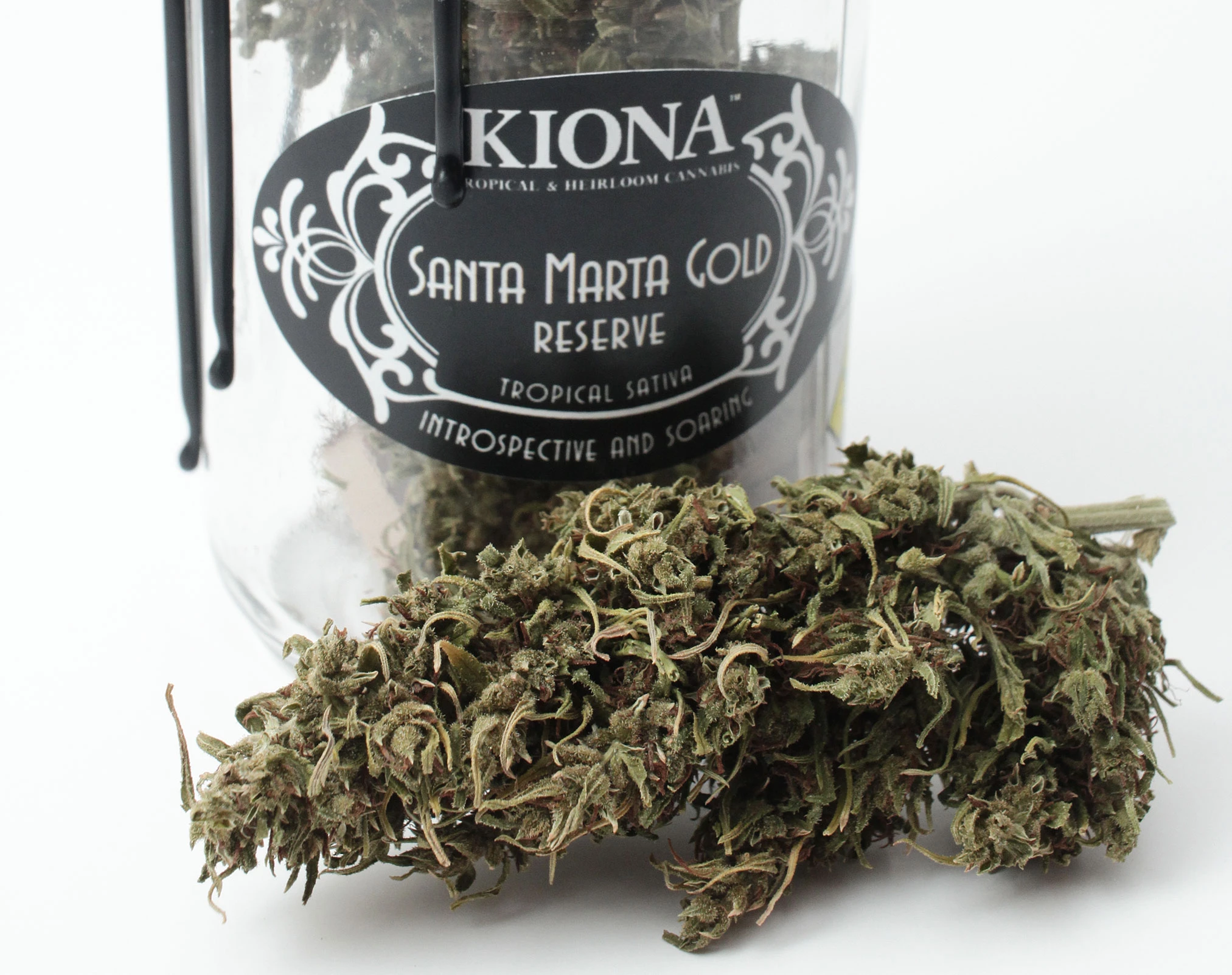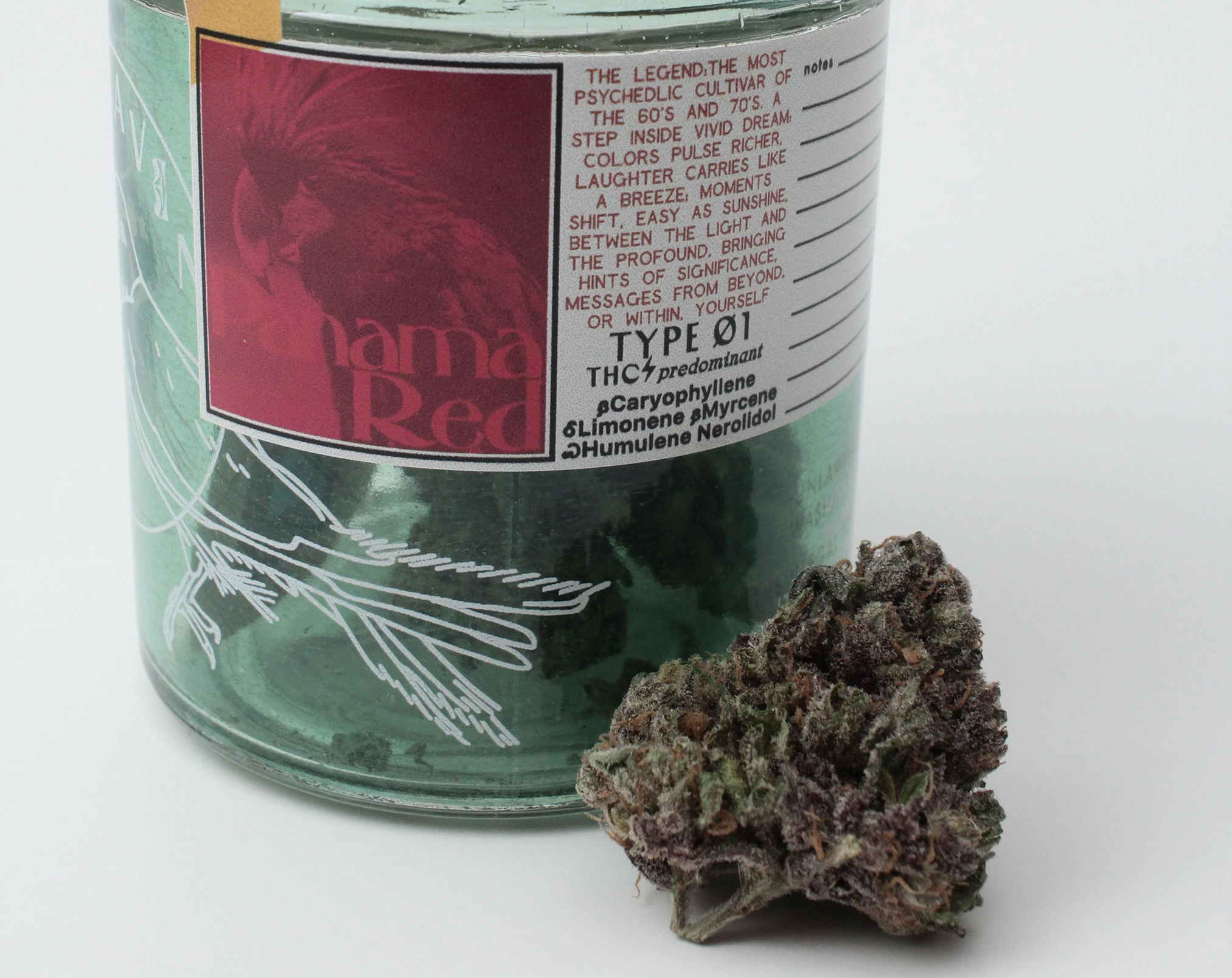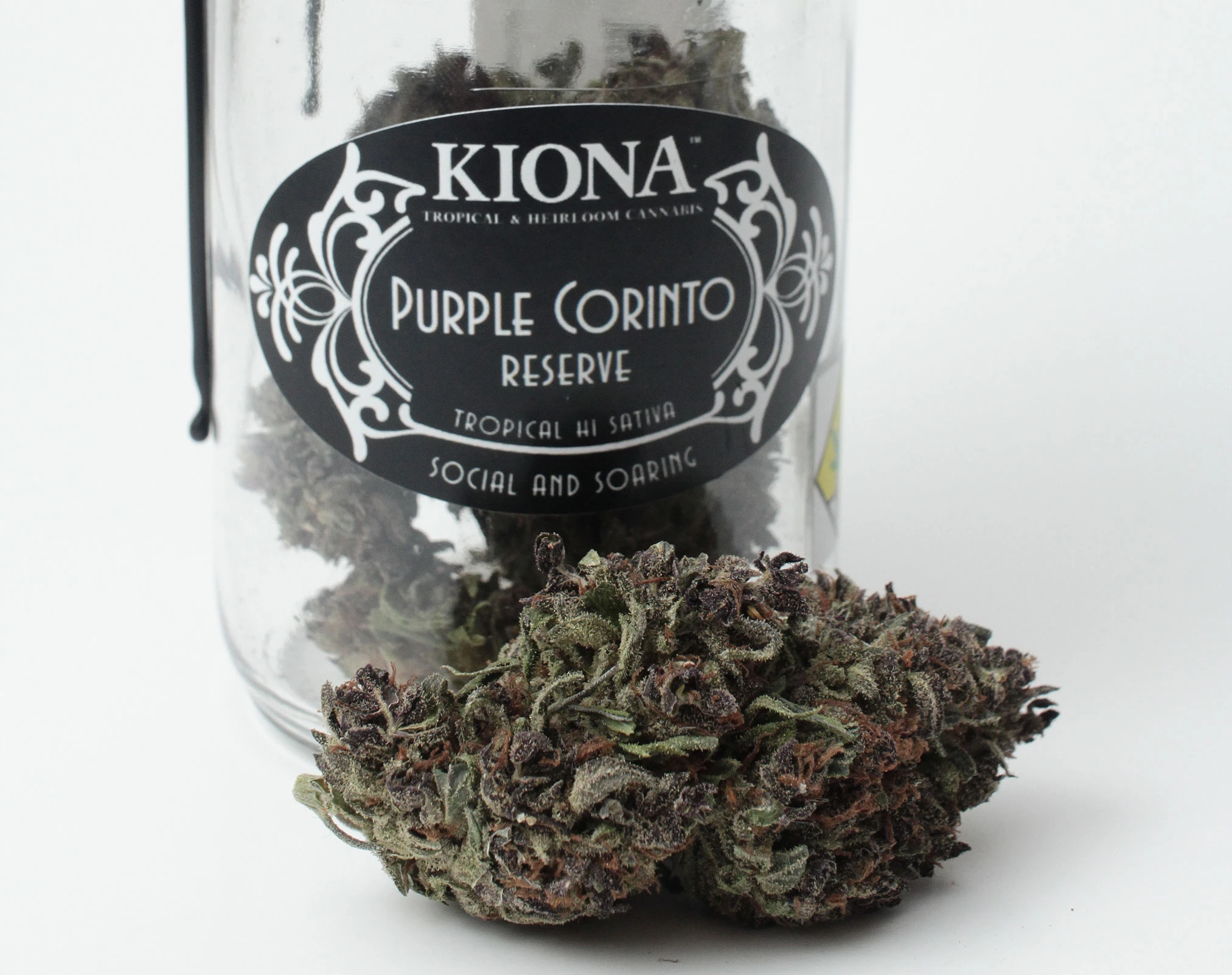Landrace Colombian Cannabis Strains
The Colombian drug trade may be more known for its production of coca than cannabis, but Colombian landrace strains made their way to North America in bulk throughout the 1970s and 1980s. Like most landrace cannabis, pure Colombian strains are hard to find in today's market, but many modern strains may have more Colombian lineage than most people realize.

Strains like Haze are said to have pure Colombian or Colombian-dominant lineage, and widespread breeding of strains like Northern Lights has imparted a considerable Colombian influence on modern genetics. Even though the Colombian genetics in modern cultivars like Miracle Alien Cookies have come into question, it nevertheless signifies Colombia’s ongoing legacy in American cannabis culture.
Given the similarities between Colombian landrace strains and modern American varieties (when compared to other landrace cannabis), Colombia’s small but growing legal export market may provide a pathway for its landrace strains to achieve global prominence once again.
Before we dig into what Colombian landrace strains are like, and how they became popular in the United States, let's look at the history of how they got to Colombia in the first place.
The African origins of Colombian landrace strains
In our What Are Landrace Strains? piece, we mentioned that weed was probably brought to Colombia around 500 years ago, most likely from Central Africa. There’s been discussion about the use of the term marijuana by Americans and it’s worth noting that this term shares the same roots as the Central African genetics that were the cornerstone of cannabis cultivation in the Americas.
Although marijuana is generally thought of as a Mexican word (it’s definitely not a term coined by Harry Anslinger or any other American) it's probably derived from the Central African word mariamba, which arrived in Central or South America with the Spanish slave trade of the 16th and 17th century. From there, it took on the more familiar form of mariguana, eventually spoken as marihuana, and finally, marijuana.
The original ancestry of landrace Colombian cannabis is likely to have been brought by African slaves, and developed distinct characteristics over the centuries that it became acclimated to Central and South America where it was cultivated and hybridized into Colombian landrace strains. After several centuries, commercial cannabis cultivation in Colombia and neighboring Panama have taken root in two distinct regions with very different climates.
Before we dive into the details of landrace Colombian strains, it’s worth touching on how Colombian cannabis exports became such a staple in American markets.
Why did Colombia start exporting weed to the United States?
Understanding why so much Colombian cannabis arrived in the United States has a lot to do with the politics of agriculture. Before the 1970s ‘Green Revolution’ spurred the development of genetically modified crops and farming technology that allowed American corporations to assert influence over foreign farmlands in ‘periphery’ or poor countries, the 1920s saw a similar series of investments in Latin America.
The basic gist is that companies like the United Fruit Company invested heavily in coastal farmlands, and built plantations that would produce tropical fruits for export for the United States and Europe. The economic gains fell largely to foreign investors, and many local farmers lost their land and livelihood in exchange for a low-wage occupation in brutal conditions.
According to the book Marijuana Boom, It was under these conditions that we can find records of early smugglers looking to circumvent the economic oppression of ‘modernization’ with small-scale production of cash crops like marijuana. Dr. Lina Britto, author of Marijuana Boom, says that “during the golden years of the United Fruit Company in the 1920s and early 1930s, incipient marijuana crops emerged in some valleys of the Sierra Nevada of Santa Marta, near the banana district.” Although the region already had a history of cannabis cultivation for domestic use, it’s thought that the expansion of fruit plantations effectively eradicated the practice until ‘contrabandistas’ utilized the developing export infrastructure to secure higher prices for cannabis crops abroad.
The practice was greatly accelerated in the 1960s and 1970s, when more serious measures against domestic cultivation in the United States began to take shape (and ‘modernization’ of agriculture continued to disrupt and displace traditional farmers). Just like in Thailand, the growing intensity of drug enforcement funneled trafficking into the hands of paramilitary operations with strong political connections. By the late 1980s, cannabis cultivation within the United States was on the rise, and Colombian smuggling operations abandoned marijuana altogether.
Vintage Colombian landrace strains
For today’s consumers, some would say most landrace strains are a relic from the past that can’t be recreated, but there have always been products out there labeled as Colombian Gold, Panama Red, or other Colombian landrace strains. So what’s the deal?
The landrace Colombian strains we think of today were typically grown in one of two different climates: the mountains of Santa Marta, and the lowland coastal regions near Panama. Famously potent landrace strains like Colombian Gold and Santa Marta Purple were created by the equatorial sun and harsh weather of the Sierra Nevada mountains. Although it’s become a blanket term for marijuana to Spanish speakers, “La Mota” is originally a landrace strain from Santa Marta (it means ‘the flower’).
Perhaps the best example of a lowland Colombian strain is Panama Red, which is well-known by name, but not so easy to trace in its lineage. Some theorize that it’s descended from (or even identical to) highland Colombian Gold or other strains from the mounts of Santa Marta, a few hundred miles up the Caribbean coast. Moving from the mountains to coastal areas has a number of logistical benefits, and being in Panama would have allowed smugglers to avoid narcotics enforcement at the Colombian borders and coastlines. Even though the Caribbean coastline is still a great climate for cannabis cultivation, the potency of lowland crops probably didn’t match that of mountain-grown herb.
Although we mentioned the likelihood that cannabis first came to this region from Africa, genetic testing has suggested that at least some examples of classic Colombian Gold share genetic lineage with Thai landrace strains. That may indicate that Thai weed was brought to Colombia in the 1960s and 1970s, likely by American or European smugglers. What’s interesting is that other examples of Colombian Gold suggest a closer genetic relation to strains like Nigerian Silk, which could have been brought during the smuggling era, but also may indicate the relationships described above. Colombian landrace strains may be all of the above: domesticated African strains, Southeast Asian strains imported by Americans in the 1920s, and a wider variety of imports from the late 1960s onward, not to mention hybrids created over time.
In the end, trying to be exact about a particular Colombian landrace strain is like trying to define Chocolate Thai — names like ‘Colombian Gold’ or ‘Panama Red’ can be as much a reflection of regional traits and growing methods than the genetics themselves. For now, the fact that Colombian landrace strains were often described by their looks can go a long way in helping retrace history. As time goes on, genetic testing will undoubtedly reveal more. So, let’s check out what sort of Colombian landrace strains are available in a place like Washington State!
Santa Marta Gold a.k.a. Colombian Gold
When it comes to Colombian Gold, everyone agrees on one thing: at some point, the magical pure sativa of the early 1970s became a watered-down version of itself. Whether that’s due to scaled-up commercial growing, genetic hybridization, or both depends on who you ask.

The strain probably originated in the coastal mountain regions of Santa Marta, from a variety of locations and climates. If you came across the ‘true’ vintage today, it might be labeled as ‘1972 Colombian Gold’, but it’s not entirely clear what the differences are from the 1980 Colombian Gold, the seeds of which were widely distributed and probably became the basis of most early Haze varieties. It’s often said that Old Timer’s Haze is the same as 1980 Colombian Gold, and you can see both look similar to the offering from Kiona above.
It’s perhaps best described by SnowHigh’s comments on their 1972 Colombian Gold offering, which say, “real Gold has an astringent quality, honeysuckle aroma and taste” with effects that are “a creeper high as well as immediate rush.” They continue, “At first one might think they are not actually high as the experience is remarkably different from all other types of cannabis. The high is euphoric but the experience affects the mind and leaves the body well-grounded as if the person experiencing the effects were high from the head up.”
Panama Red
Panama Red is one of the first Latin American strains to have gained recognition in the States, second only to Colombian Gold, although quite a few people seem to remember seeing Panama Red first. It’s been referenced in pop culture many times, including Van Halen’s song Amsterdam, the movies Detroit Rock City and Apocalypse Now, and the hit series Trailer Park Boys.

Although a number of sources point to red hairs as the source of its name, it could have also come from the purple color of the flowers, as seen above. Given the fact that Panama Red was widely available for over a decade, there was probably a variety of different buds labeled with the same name. Most of the time people are talking about plants that are much smaller and faster to flower than Colombian Gold, and some theorize it’s a hybrid of an imported indica strain, but others disagree.
The effects are also recounted differently, with some remembering heavy, narcotic effects that hit quickly, and others describing a lighter, upbeat effect similar to Colombian Gold. By today’s standards, we’d guess that even the heavier versions would be considered sativa dominant.
Washington-based producer Raven Grass (pictured above) has a Panama Red that has fairly light and gradual effects that uplift the mind but also mellow out the body, blending into an enjoyable state of clarity and relaxation.
Purple Corinto
For a taste of what a Colombian hybrid has to offer, Kiona offers a blend of the Corinto Monster with the legendary Hawaiian Puna Budder. Although Corinto may have eventually become a word that’s used more for commercial-grade weed, this example shows pristine Colombian lineage in its beauty, aroma, and effect. The smell is sweet and faintly herbal, with that undeniable ‘purple’ essence that American smokers would probably associate with the Mendocino Purps craze of the 1980s.

The buds are far less wispy than Santa Marta Gold, but the Corinto is still a true long-flowering Colombian and these flowers are anything but dense. The effects aren’t entirely different from the Santa Marta, but the Hawaiian brings in a small dose of euphoria that makes this a delightfully soothing and comfortable experience that I’d recommend to just about anyone.
The Future of Colombian Landrace Strains
It’s often said that vintage landrace strains have been lost forever, and you might hear that they were never any good in the first place. After trying the samples above, we tend to think differently. We can’t say they’re exact replicas of what was found 50 years ago, but they do provide an entirely different experience than today’s strains. Hype over the newest ‘exotic’ strains is sure to continue, but as they become mass-produced and widely available, we can’t help but think the demand for unique and hard-to-find cannabis will lead many consumers back to more traditional ‘exotic’ choices found in vintage landrace strains. We can’t wait to see what else is out there waiting for the chance to make a comeback!